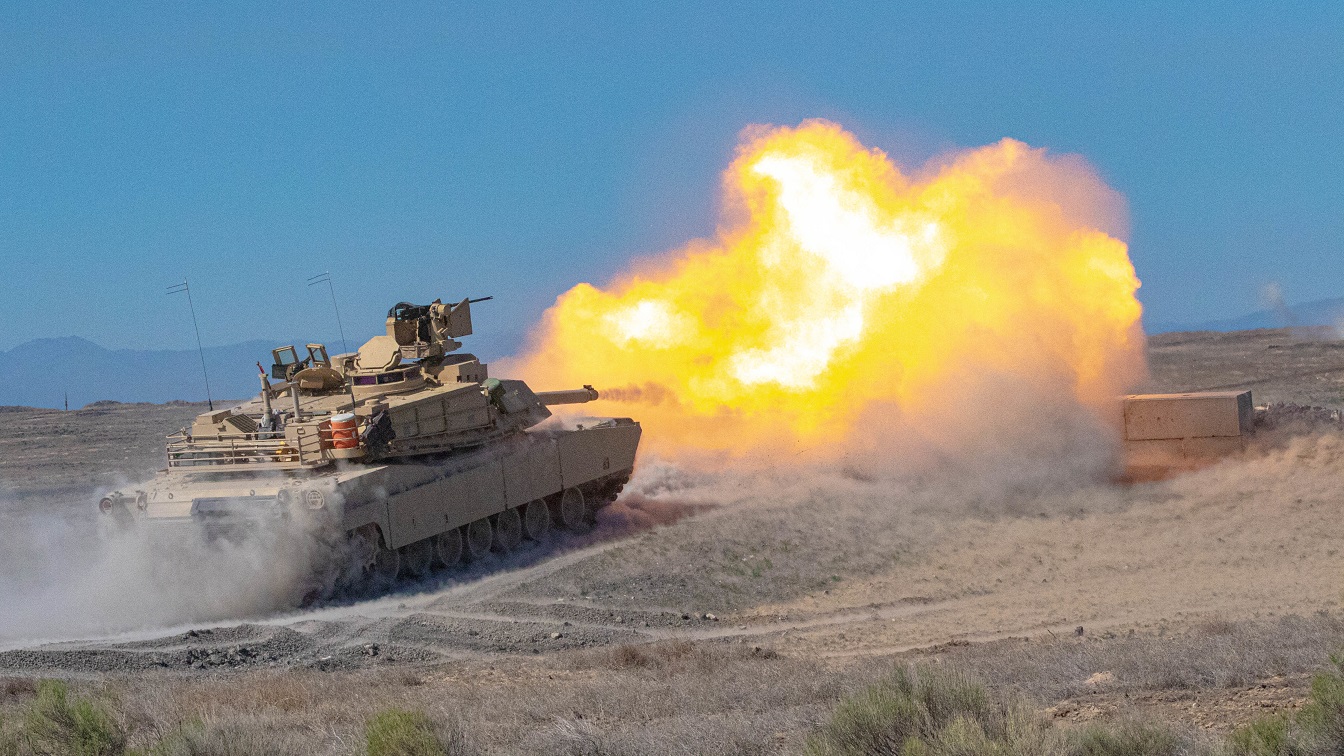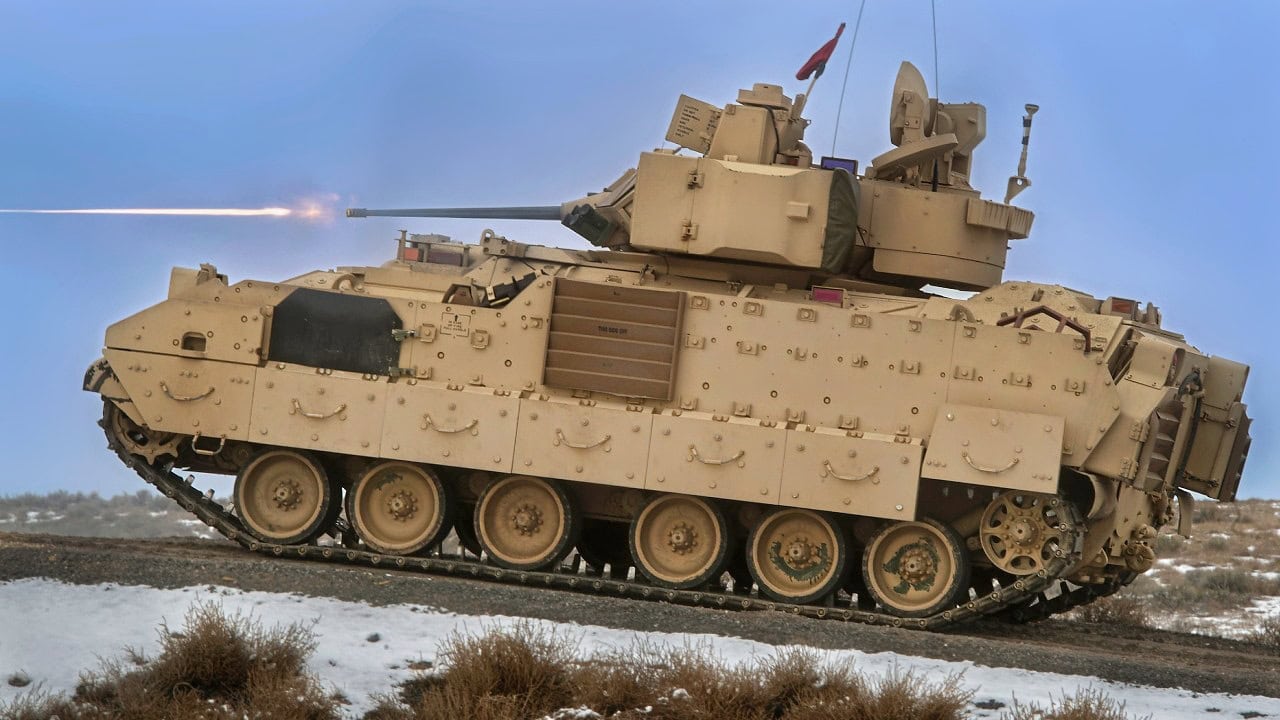Key Points and Summary: The U.S. Army is moving toward the future with the XM-30, a next-generation mechanized infantry combat vehicle that may replace the aging Bradley Fighting Vehicle.
-Featuring artificial intelligence, modular open systems architecture, and an optionally unmanned capability, the XM-30 promises to adapt to modern battlefield threats like drones and anti-tank weapons. The Army envisions AI as a “virtual crew member” assisting operators in targeting, maneuvering, and defense.
-However, budget concerns and competition with the M10 Booker program could delay full development. For now, the Bradley remains in service—but the shift to robotic armored warfare is coming sooner than expected.
Could the XM-30 Replace the Bradley Fighting Vechicle with AI and Robotics?
I know you U.S. Army Bradley Fighting Vehicle operators will read this and shake your fists in defiance.
Plus, Ukrainian soldiers who love Bradley’s performance in the war against Russia may raise their eyebrows in astonishment.
However, the Army is moving in a new direction and that could mean that the famous Bradley will be replaced in numbers. I am referring to the new XM-30 Mechanized Infantry Combat Vehicle. Let’s take a closer look to see if this platform can carry the torch and improve on the Bradley.
Army Is Pushing Ahead with the New Combat Vehicle
The XM-30 was previously known as the Optionally Manned Fighting Vehicle (OMFV) until 2023, so the XM-30 nomenclature may not sound familiar. The XM-30 is currently in what the Army calls “detailed design phase,” so it is moving quickly toward full development. It will reach the important “B Milestone” in the second quarter of this year.
XM-30: This Thing Could Become a Battlefield Robot
Surprisingly, the XM-30 has an uncrewed version for an autonomous fight, which is the original “optionally manned” descriptor.
This is a significant departure from decades of manned performance with the Bradley and M1 Abrams during mechanized warfare.
It will still be primarily manned, but a robotic armored personnel carrier option would be quite the advancement and the first time an uncrewed fighting vehicle will grace the battlefield.
Analyzing the Bradley’s Role in Ukraine
The Army believes the Bradley has performed fine in Ukraine and has enjoyed periods of enormous success, even with the ability to destroy Russian tanks.
The Bradley has been quick and maneuverable, with the skill to knock out enemy positions and deposit troops on the battlefield for quick skirmishes and then pick them up again for another mission.
However, there has been the question of survivability for all armored vehicles in Ukraine. Swarming and loitering FPV kamikaze drones are a nightmare for tank and armored personnel crewmen.
Anti-tank guided missiles can also be a force multiplier to batter tanks and APCs. Can the crewed Bradley continue to survive in that environment as the drones and missiles mature even further? Maybe it is time for a robotic option for the fighting vehicle. That’s what the Army is thinking.
Army officials have said that the XM-30 is to have “mounted active protection systems to ward off uncrewed aerial systems and antitank weapons,” according to a Congressional Research Service report.
Bradley Is at the End of the Line
So far what those active protection systems comprise is unclear. Meanwhile, Bradley, which came online in the early 1980s, has been updated so much that the platform cannot handle upgrades anymore.
It has served well since Ronald Reagan was president, but the Army is looking for something that can be improved for the next several decades.
The XM-30 has easily updatable architecture, so software improvements can make it the best unmanned ground vehicle in the force.

Engineers with the 116th Brigade Engineer Battalion conduct M2A3 Bradley fighting vehicle gunnery qualification on March 27, 2018, Orchard Combat Training Center, south of Boise, Idaho. Combat engineers with the 116th BEB trained through gunnery table XII, evaluating their ability to execute collective platoon-level tasks in a tactical live-fire environment; including integrating dismounted soldiers with their assigned BFV. (U.S. Army National Guard photo by 1LT Robert Barney)
This updatable system is called the Modular Open Systems Architecture (MOSA), and that has engineers excited that once they can build a prototype and begin testing and evaluation, the MOSA will allow defense contractors to integrate soldier’s performance input into real improvements that happen on the fly. The Army will then move the XM-30 into “Production and Fielding Phase. This phase results in a Low-Rate Initial Production (LRIP) contract.”
Artificial Intelligence a ‘Virtual’ Crew Member
To run the various systems, the Army envisions the XM-30 will use artificial intelligence to power the modular architecture. The AI will also create what is called a “virtual crew member” with the two other manned operators. This is the first step into full autonomy. The virtual crew member will help with maneuvering, anti-missile and drone defense, and targeting its weapons systems.
The XM-30 will have a main gun and anti-tank missile systems, although it is not clear if these will be existing weapons or newly developed models.

Oregon Army National Guard M1A2 Abrams battle tank with Alpha Troop, 3rd Squadron, 116th Cavalry Regiment, engages a target at a firing range during annual training at the Orchard Combat Tranining Center near Boise, ID, June 19, 2021. Soldiers trained in their military occupational specialties during annual training. (National Guard photo by Spc. Dominic Trujillo, 115th Mobile Public Affairs Detachment)
This all sounds great, but this oft-mentioned question will be raised with policymakers at the DOD and legislators on Capitol Hill: Is there enough in the budget to fully develop this vehicle?
Virtual crew members and uncrewed ground vehicles are quite the departures for an Army that usually continues to update armored vehicles for decades before they are replaced.
The XM-30 would also have to compete for resources with the new M10 Booker combat vehicle that is in development. It will be interesting to see how the Army envisions the Booker and XM-30 working together.
They could both form reconnaissance roles with larger armored formations in Brigade Combat Teams that feature cavalry tactics. This would give the Army three options on the battlefield – the M1 Abrams, the Booker, and the XM-30 to eliminate enemy tanks and vehicles and survive better in a shooting war.
The new Secretary of the Army has many options to consider when evaluating future warfare and vehicle needs.
The XM-30 has several positive attributes, but the program could be on hold until Pete Hegseth’s Department of Defense develops a new acquisition strategy. That means the Bradley is still in business…for now.
About the Author: Dr. Brent M. Eastwood
Brent M. Eastwood, PhD, is the author of Don’t Turn Your Back On the World: a Conservative Foreign Policy and Humans, Machines, and Data: Future Trends in Warfare, plus two other books. Brent was the founder and CEO of a tech firm that predicted world events using artificial intelligence. He served as a legislative fellow for U.S. Senator Tim Scott and advised the senator on defense and foreign policy issues. He has taught at American University, George Washington University, and George Mason University. Brent is a former U.S. Army Infantry officer. He can be followed on X @BMEastwood.

